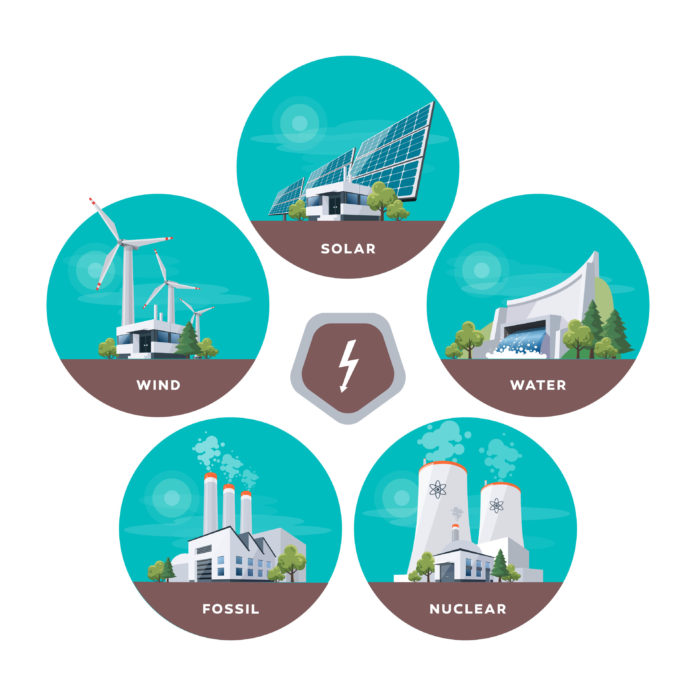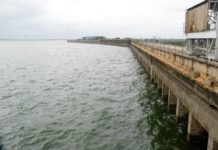The world is experiencing a wave of climate change policy. Every large nation is now focusing on reducing their carbon emissions to decrease significantly the level of environmental pollution that has been plaguing our planet. According to experts who are well versed in energy policies, it would be much easier and faster if we focused on constructing new nuclear power plants that can be built quickly and are cheap. The argument might not be familiar, but it evokes an admiration in a powerful and irresistible way on its face.
Jesse Jenkins and Samuel Thernstrom reviewed the relevant research and came up with an overview. Yes, one can completely imagine a power grid that is supplied 100% by the renewables such as hydro, wind, geothermal and solar energy, but you have to accept that it can be tricky to manage irregular sources of energy. Constructing nuclear power plants or fossil plants that bury their CO2 which will simultaneously run with the renewables will significantly reduce the deep decarbonization cost in theory.
When the pro-nuclear argument is assessed in much more practical terms, a drawback is exposed. The flaw is that currently very few nations are constructing new nuclear reactors and most of the nations that had nuclear reactors before are downsizing them. The public opinion has suddenly turned against nuclear energy in Japan and Germany. Bureaucracy, high costs of initiating construction and construction overruns are some of the roadblocks that have brought great difficulties to nuclear programs in the US and Britain. South Korea and China are still building nuclear plants, while the rest of the world has decided on a go-slow policy on new reactors.
The question now is, what do we need to do to reverse the situation and bring around nuclear energy as a crucial weapon in the fight against climate change? In general, we have two choices that might answer this question. Neither of the options guarantees a success in the war, but for those who are concerned about the laborious efforts required to halt global warming, both choices need to be thoroughly considered.
Option 1, is to try and scale up the existing nuclear technology that we have proven to work. This would require the governments and industry to clear the roadblocks that are preventing the construction of new light-water reactors. Light-water reactors are the most common type of reactors that were put up in the 20th century. We knew the reactors worked and that is why we doubled them down. These reactors contribute energy that makes up a fifth of the American power grid, and South Korea has invented affordable ways of constructing the reactors. Nations now don’t have to think hard about how to reduce constructions costs because they can easily mimic South Korea, using economies of scale and standardized designs to bring down the costs of expanding the number of reactors that they have. A pro-nuclear advocate with Environmental Progress, Michael Shellenberger, supported this argument.
In the 1970s and ‘80s, Sweden and France scaled up their nuclear power and managed to build some of the cleanest and safest grids in the developed world. According to PLOS One, if the world would mimic what Sweden did, it would take just 24 to 35 years to remove the use of fossil fuels to generate electricity altogether.
The idea might look appealing, but currently, such a large-scale expansion might be difficult. First, is that the public opinion on nuclear energy is not encouraging. This sudden shift in opinion was caused by the meltdowns at Fukushima in 2011 and Three Mile Island in 1979. Although there were no fatalities in both accidents and the fact that nuclear energy is much safer than natural gas or coal, the meltdowns fed into the opposition of nuclear power and as a result strict regulations that made the construction of nuclear plants expensive were adopted. Other countries like Germany moved to eradicate the need for nuclear power stations altogether.
Secondly, prospect investors might be reluctant to fund the construction of these new reactors. The modern reactors are enormous by design so they would require significant upfront costs and recently construction overruns and delays have also been a common occurrence. These problems are some of the reasons why investors and would opt to fund the wind, natural gas or solar plants because they are not costly and are easier.
Option 2, rests on the belief that the unfavorable policies adopted against nuclear energy are too difficult to reform. This has forced them to rely on radical innovation as the second option. At the forefront championing radical innovation for years is Third Way, a think tank located in Washington DC. Third Way has documented more than 50 US startups that are working on ingenious substitutes to the light-water reactor that is old and hulking. These cutting-edge nuclear designs, preferably, could be safer, less bulky, more flexible and eventually cost less, possibly even having less radioactive waste.
For this argument to bear fruit, it would require the support of the government for it to be able to be marketed. However, it relies on the hope that the new design which is advanced and less bulky, could conquer the economic and social obstacles that are plaguing the nuclear industry.
This option of innovation is gaining momentum on both sides of the Congress, and two new reports have discussed and explained it well. One report was done by Todd Allen and Erin Burns from Third Way, and the other by Loren King, Jessica Lovering, and Ted Nordhaus from Breakthrough Institute. Both reports recommend policies that could assist advanced reactors to be realized as an alternative energy source, through reforms of licensing processes and receiving aid from the Department of Energy. The latter can be compared to federal support for drug research.
It is not guaranteed that cutting-edge nuclear designs and technology will turn out well shortly. The newer reactor technology could end up facing the same shortfalls that the existing models are facing according to Nordhaus. “None of that goes away overnight,” he mentioned. “But if we want to reset public perception of nuclear power, I think starting with technologies that are quite different from today’s designs is our best bet.”
If one thought of having both options as a way of reviving nuclear energy, then they might not be far from the truth. It is feasible to think of a situation where some nations decide to invest seriously in the existing technologies and designs to build new light-water reactors, while simultaneously the US and other countries are creating a conducive environment for startups to create new state-of-the-art designs. However, one could adopt the ideology that both arguments could be somehow mutually exclusive. Some of the nations such as South Korea and China could concentrate more on light-water reactors and at last find a way of getting the costs to be affordable, and advanced reactors fail to pan out due to high costs and technical problems.




